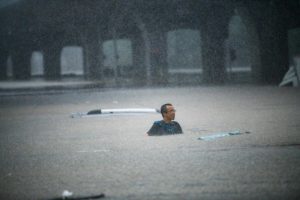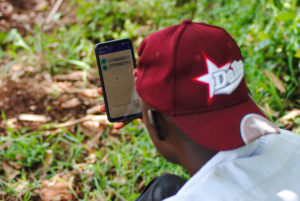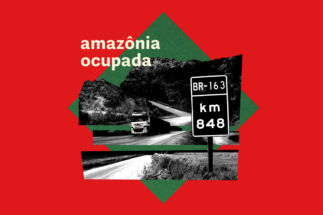Major disasters over the past two years could have been avoided or their impacts reduced if societies had taken into account their shared root causes when designing solutions, according to a new analysis by the UN.
Despite progress in preparation and response, new extremes and emerging threats are continually catching societies out, noted the report by the UN University’s Institute for Environment and Human Security.
Researchers analysed ten disasters from around the world to identify root causes and drivers. They found that societies can reduce disaster risks by identifying interconnections between them. Solutions can then be developed that take advantage of these connections.
The events were selected because they are representative of larger global issues: the heatwave in British Columbia; the Haiti earthquake; Hurricane Ida in the US; the Lagos floods; the Mediterranean wildfires; food insecurity in southern Madagascar; the drought in Taiwan; the Tonga volcano eruption; the looming extinction of the vaquita; and the unusual migration of elephants in Yunnan.
The roots of disaster
The most common root cause of these disasters was poor governance, involving a lack of risk awareness and preparation. This was present in all except the elephant migration.
The pursuit of economic interests without proper consideration for environmental impacts was the joint second most prevalent cause (in eight of the ten cases). Also behind eight cases was inequality of economic opportunities and livelihood options. Other important shared root causes were greenhouse gas emissions (seven), increasing global demand for goods (four), and the legacy of colonialism (two).
On top of root causes, the report also identified shared drivers of the disasters. These were climate change (in seven), vulnerable infrastructure (five) and drought (five). Deforestation, urbanisation, insufficient early warning, and lack of regulation or enforcement were each involved in four cases.
The impact of Covid-19 indirectly exacerbated many of the events, such as in Madagascar, the Mediterranean and Tonga, where incomes had already been damaged by lost tourism. Travel restrictions limited the delivery of food aid in Madagascar. And in British Columbia residents were reluctant to go to cooling stations for fear of catching the virus.
The disasters’ impacts were often shared too: loss of livelihood (in eight cases); loss of life (seven) and infrastructure damage (seven); biodiversity and ecosystem damage (five); health impacts (five) migration (five); food insecurity (four); and water insecurity (three).
A new normal
Last year, global disasters caused a total loss of around 10,000 human lives and more than US$280 billion in damages. If solutions do not receive investment and are not scaled up, the disasters of last year and this are “the beginning of a new normal”, the report authors warned.
However, they stressed that just as disasters are interconnected, so are their solutions. “One type of solution can prevent or reduce a number of different disaster risks,” said Dr Jack O’Connor, senior scientist at the Institute of Environment and Human Security, and lead author of the report. “Through our research, we were able to identify solutions which can prevent or drastically reduce the impacts of disasters to help us save lives and avoid costly damage.”
The researchers identified eight broad categories of solutions that are most effective for disaster risk reduction: co-existence with natural processes; innovation; enhancing collaboration; securing livelihoods; modifying consumption patterns; strengthening governance; planning for risks when designing and building infrastructure; and enhancing capacities to predict and communicate risks through early warning systems.
Co-existing with nature was ranked top, identified as part of the solution to eight of the disasters, including landslides caused by the Haiti earthquake, the formation of sandstorms in southern Madagascar, and the sedimentation of water reservoirs that contributed to the drought in Taiwan. Restoring forests, for example, prevents land degradation and stabilises soil as the trees and roots protect it from being washed or blown away.
Solution packages
The authors said disaster risk reduction has often been considered in silos. They believe the idea of a more holistic approach is gaining traction worldwide, however. “We need to shift away from implementing solutions in isolation,” O’Connor says, instead calling for them to be designed “into ‘solution packages’ that work together to address different facets of the problem… and reduce the chance of maladaptation or negative impact.”
Implementing several measures simultaneously provides a better chance of addressing the problem than any one in isolation, the report states. It cites the example of the vaquita in the Gulf of California which is threatened with extinction. Simultaneous mitigation measures include involving local fisher communities in co-managing conservation areas; introducing more sustainable fishing methods; raising awareness of sustainable consumption; and enforcing regulations to prevent overfishing and illegal trade.
Any solution package needs to have a special focus on the most vulnerable
The biggest barriers to reducing disaster risk are a lack of understanding of the local context and “copying and pasting” solutions in different locations rather than bringing in traditional knowledge at the start of the process, O’Connor says. Political will is also lacking in many cases, he adds.
The report acknowledges that solutions may result in trade-offs. For example, increasing access to air conditioning protects people from heatwaves but also increases greenhouse gases. By considering the interconnectivities of actions, trade-offs can be understood and sustainable solutions found.
The report also points out that the impacts of solutions vary between disasters and between types of people. Any solution package needs to have a special focus on the most vulnerable, the authors believe.
“Disasters are byproducts of our global system, revealing the complexities, interconnectivity and inequalities that already exist. Any attempt to remediate these disasters or their impacts must at least acknowledge that these systems exist and address them if we want to prevent something similar from happening again,” it states.








